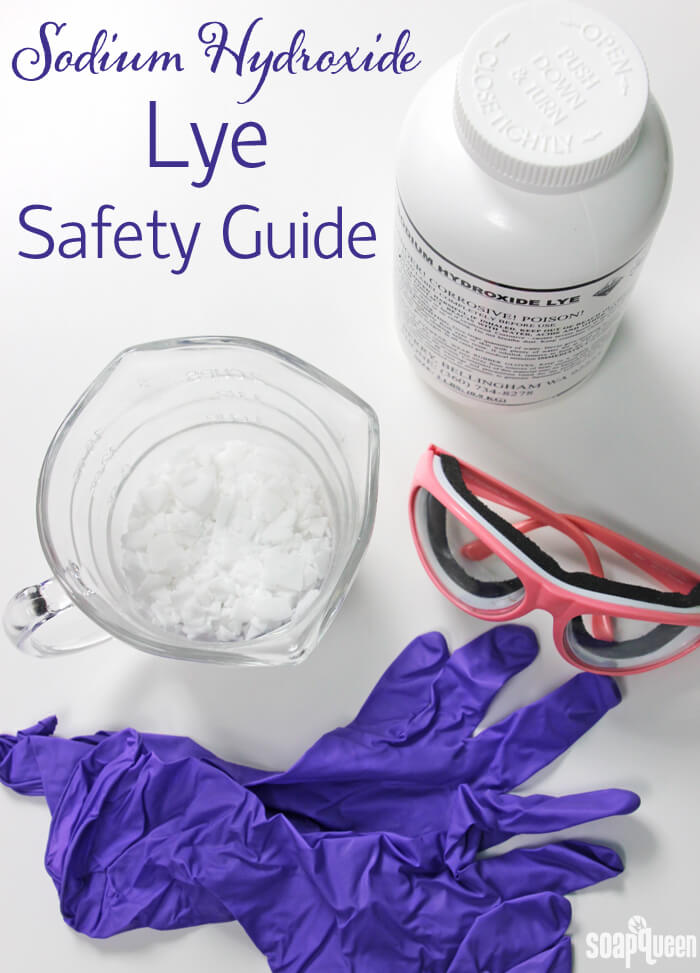
When caustic soda is exposed to a protic acid it produces water and a corresponding salt. In the case of an acid neutralization caustic NaOH is added to the effluent stream to pH Neutralize the solution.

When caustic soda is exposed to a protic acid it produces water and a corresponding salt.
How to neutralize lye. With both liquid or powder lye you should treat the infected areas with vinegar as soon as possible to neutralize the lye. Depending on the strength of the lye the water will dilute it and then the vinegar can stop or slow the burning process. Caustic soda is an inorganic compound that is a metallic base neutralized by acidic substances.
The chemical name for caustic soda is sodium hydroxide and it has the chemical formula NaOH. It is also known as lye. When caustic soda is exposed to a protic acid it produces water and a corresponding salt.
The number one method of clean up is using simply H2O also known as WATER. Water dilutes the strength of the lye solution or spill. Water prevents a chemical reaction of acid and alkali and the resulting exothermic heat discharged during neutralization.
To neutralize a high-pH solution you will have to add an acid. Vinegar is the usual choice though in the lab one might use a few drops of hydrochloric acid. To figure out when youve succeeded in neutralizing your chemicals the pH strips are great aiming for somewhere.
Although vinegar should not be used to treat lye burns on skin it can be used as precaution during the cleanup process. A quick wipe of your workspace with a vinegar-soaked rag will neutralize any lye dust that may have gotten on the surface. Now that you have safely mixed your lye solution its time to make cold process soap.
After youre done baking wipe your work surface with an acid such as vinegar to neutralize any lye that might have inadvertently come in contact. If you spill lye at any point while baking wipe it up immediately rather than waiting until youre done to start cleaning up. There are two types of acids.
Mineral inorganic acids such as sulfuric hydrochloric or nitric and carboxylic organic acids such as formic or acetic. To neutralize acids a weak base is used. Bases have a bitter or astringent taste and a pH greater than 7.
Common bases are sodium hydroxide potassium hydroxide and ammonium hydroxide. PH is the secret behind how vinegar can neutralize lye-based oven cleaners. Because its an acid and low in pH it can in effect pull the highly alkaline pH level of an oven cleaner back down to tolerable levels.
That can make it helpful in dealing with strong odors from oven cleaners. Pour baking soda directly onto any acid spill. This will neutralize light acids like vinegar or even strong dangerous acids like muriatic and sulphuric acids.
Douse the entire affected area with the baking soda sodium bicarbonate NaHCO3 to neutralize the acid. How much baking soda does it take to neutralize. The folks at Summer Bee Meadow have become the experts on liquid soap making.
The big difference is that their recipes are not calculated with a lye excess but rather with a 0 lye discount. But even with no lye excess you still need a bit of neutralization. To neutralize using the Summer Bee Meadow method.
Molarity is the number of moles in a liter of solution. Therefore molarity is equal to moles divided by volume. In order to reach neutrality we need to have the same number of moles of hydroxide.
When working with lye keep a bowl of vinegar nearby to splash on any skin the lye accidentally comes in contact with. Vinegar will counteract lye and stop its burning. Milk will also neutralize lye and can be used if the lye is accidentally swallowed.
If either of these thing happen call 911 immediately and get medical help. As an extra precaution to neutralize any lingering lye solution pour a bit of vinegar down your drain and wipe your counters with a vinegar-soaked rag. How to Make a Lye Bath for Pretzels.
If you want to use less water then you can neutralize the NaOH solution with a weak acid like acetic acid vinegar added to the water. 1 gallon of store concentration acetic acid per tote will be sufficient then you can then use less water to rinse the vinegar out of the totes. Its not a big deal.
Some believe the lye solution should be neutralized with an acid before disposal recommending the use of household vinegar to counteract the alkali. This is unnecessary as simple dilution with plenty of tap water will easily drop the pH to non-hazardous levels. The task of any pH adjustment system is to adjust the pH of the process stream into the defined acceptable discharge range.
In the case of an acid neutralization caustic NaOH is added to the effluent stream to pH Neutralize the solution. This neutralization or titration can be expressed as follows. HCl NaOH NaCl H 2 O.
To neutralize them use a weak base. There are two types of acids. Mineral inorganic acidssuch as sulfuric hydrochloric or nitricand carboxylic organic acids such as formic or acetic.
Bases also called alkaline compounds have a pH greater than 7. Use a weak acid to neutralize bases.